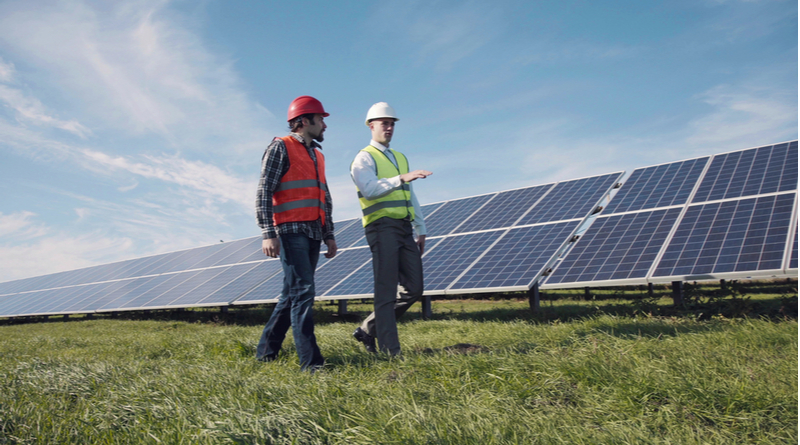What is Sustainable Infrastructure?
The goal of sustainability is to meet the current needs without compromising the ability of the future generation to meet their own needs. Infrastructure is the term used to describe the facilities which support modern human life, such as water supply, sewage plants, housing, roads, cable networks, food supply facilities, schools, hospitals, airports, community meeting places, business and government buildings, bridges and railways.
Sustainable infrastructure involves developing roads, buildings, energy and water infrastructure with due consideration to economic, social and environmental implications.
Sustainable infrastructure not only enables sound economic development, job creation and the purchase of local goods and services, it also enhances the quality of life for citizens, increases positive impacts, helps protect our vital natural resources and environment, and promotes a more effective and efficient.
What 3rd level courses are available?
Universities and colleges in Ireland are offering Sustainable Infrastructure courses in the following subject areas:
- Sustainable Energy Engineering – The study of energy use, environmental performance and sustainability in the design and operation of buildings and their associated facilities and services systems.
- Introduction to Sustainable Development (FETAC L5) – Gain an understanding of concepts such as sustainability, sustainable communities and carrying capacity.
- Graduate Diploma/MSc in Management For Sustainable Development – Develop an understanding of the theoretical, practical and legal aspects of modern environmental practices.
- Diploma in Sustainable Development – The study of economic growth and development, social sustainability, and physical environment sustainability.
- Sustainable Energy and Construction Technology – The study of environmentally sustainable building and construction technology.
- Energy for a Sustainable Future – The study of the sustainability problems of current fuel use, and examination of more efficient use of energy, including renewables.
- Innovation: Designing For a Sustainable Future – The study of how innovation can be directed towards ensuring a socially, economically and environmentally sustainable future.
Studying Sustainable Infrastructure in college
There are many Sustainable Infrastructure courses that take place over 1 year to 4 years depending on the course and modules selected. There are also part-time courses and night courses available so you can be sure to fit in your studies no matter what your schedule is like.
Courses will cover all theory work through lectures, assignments, tutorials and taught modules. Assessments will take place on a continuous basis with written examinations and practical assignments combined in order to achieve a qualification. You could also consider work experience or volunteering to help with any type of eco-project, alternative energy, living-building design or sustainable-community scheme. Many charities are active within the environmental sector and offer opportunities to volunteer in conservation work. You may be able to do a relevant work placement as part of your degree course or apply for a summer internship.
Work Experience in waste management and recycling is also relevant. Roles such as sustainability or energy project officer or assistant can provide an insight into issues around sustainability. Office experience can also help develop your understanding of how businesses operate.
Work Experience will not only give you the opportunity to obtain a deeper knowledge and understanding of the industry, it will also give you a chance to do some essential networking with other industry professionals and gain valuable contacts for the future.
Career options
After completing a course in Sustainable Infrastructure you will be able to get started in a career that uses specific knowledge of sustainability and the environment as well as construction and engineering.
As a sustainability consultant, you’ll help companies and businesses become more socially and environmentally responsible in how they operate. You’ll need to create sustainable solutions for the often conflicting needs of people, the environment, development and successful business.
Work will involve evaluating the impact a company is having on the environment and then minimising that impact or planning the use of limited resources. You may be involved in all or some stages of a project from planning and building, through to remediation, restoration and reuse of land and property.
Working hours will depend on whether you are employed by a company with set business hours or if you are contracted to various companies. The hours are usually full time, Monday to Friday. You should expect to work extra hours when project deadlines approach.
You may spend a lot of time on site, carrying out environmental assessments and providing advice at the start of the project and then as the project progresses you are likely to be more office-based. You will typically work as part of a team, liaising with other professionals such as architects, contractors and surveyors.
There are opportunities within specialist consultancy firms, such as business, management, environmental and sustainability consultancies. You could also work for environmental charities, universities or local and central government. With experience, there are opportunities to work freelance.
If you’re willing to relocate, you’re likely to increase your chances of progression. There are also opportunities to work on projects abroad.
Related jobs include:
- Historic buildings inspector
- Conservation officer
- Housing manager/officer
- Local government officer
- Town planner
- Transport planner
- Urban designer
- Civil Service administrator
- Community development worker
- Environmental manager
- Estates manager
- Fire risk assessor
- Landscape architect
- Planning and development surveyor
- Sustainability consultant
Further study
After completing a course in Sustainable Infrastructure you may choose to pursue further study in a specialist field to increase your knowledge base and skillset. Postgraduate study can also be used as a means to change career focus or to gain professional qualifications required to practise in certain career areas such as planning, design and development, as well as in areas such as transport, economic development, housing, urban regeneration, tourism, environmental protection and environmental consultancy.
FAQ
What skills could be helpful for a career in Sustainable Infrastructure?
The knowledge of environmental issues, but also technological solutions, and relevant environmental legislation, policy and guidance will be critical to a career in sustainable infrastructure. You’ll need to have the ability to balance your commitment to the environment with the need to be corporate and business-minded.
Excellent communication skills to rationally explain, explore and discuss environmental issues, as well as persuasive skills to navigate resistance to change and influence people to accept your ideas.
Confidence to present information to various stakeholders, lead client workshops and represent the company at industry events and the ability to build relationships with a range of people will be very important.
Where can I study Sustainable Infrastructure?
Explore your options here
Did You Know?
- The Great Pyramid of Giza was the tallest building at 455ft tall for 3800 years. It is said to have been constructed from over 2,300,000 blocks of limestone, although no one can agree on whether the workers dragged, lifted, or rolled them into place. Adjusted for modern costs, at $496 per block plus labour and modern materials, the pyramid would cost $1.2 billion to build.
- Concrete has been the most popular building material throughout history. Concrete has been used for some of the most famous structures like the Roman Pantheon.
- The photo of 11 men eating lunch atop of a skyscraper in 1932 became incredibly famous and commercialized – with no Photoshop or editing. The photo was taken on the 69th-floor months before the construction of the skyscraper was completed. It wasn’t until 2003 that the person who took the incredibly famous photo was identified as Charles Ebbets.












Comments